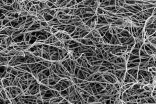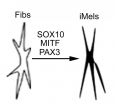Damming beavers are slowly changing the world
Study shows the effect that growing beaver population is having on habitat and methane gas emissions
2014-12-16
(Press-News.org) There are consequences of the successful efforts worldwide to save beavers from extinction. Along with the strong increase in their population over the past 100 years, these furry aquatic rodents have built many more ponds, establishing vital aquatic habitat. In doing so, however, they have created conditions for climate changing methane gas to be generated in this shallow standing water, and the gas is subsequently released into the atmosphere. In fact, 200 times more of this greenhouse gas is released from beaver ponds today than was the case around the year 1900, estimates Colin J. Whitfield of the University of Saskatchewan in Canada. He led a study¹ in Springer's journal AMBIO² about the effect that the growth in beaver numbers in Eurasia and the Americas could be having on methane emissions.
The fur trade of the sixteenth to nineteenth centuries nearly led to the extinction of beaver populations worldwide. After trapping was limited and conservation efforts led to the re-introduction of these animals into their natural ranges, the number of North American (Castor canadensis) and Eurasian (Castor fiber) beavers grew. The North American beaver has also been introduced to Eurasia and South America (specifically the archipelago of Tierra del Fuego); establishment of these populations has, in effect, created an anthropogenic greenhouse gas source in these landscapes.
Beavers are skilled at building dams in rivers to create standing open-water ponds and neighboring wetlands. Such ponds are generally shallow, with dams seldom being more than 1.5 metres high. Carbon builds up in the oxygen-poor pond bottoms and methane is generated. This climate warming gas cannot adequately dissolve in the shallow water and is released into the atmosphere.
According to Whitfield, it has long been known that release of methane from beaver ponds to the atmosphere is more intense than for other types of wetlands. To quantify methane release, his team estimated the size of the current global beaver population. They also determined the area covered by beaver ponds.
Whitfield's team found that global beaver numbers have grown dramatically, to a population of over 10 million. The Eurasian population could grow by an additional four million. In the process of population recovery, beavers have dammed up in excess of 42,000 square kilometres of aquatic pond areas, which are bordered with over 200,000 kilometres of shoreline habitat.
Parallel to the increase in beaver populations is also a notable increase in methane emissions because of their pond-building efforts. At the end of the 20th century, beaver activities contributed up to 0.80 teragrams (or 800 million kilograms) of methane to the atmosphere each year. This is about 15 percent of what wild cud-chewing animals, such as deer or antelope, contributed.
"The dynamic nature of beaver-mediated methane emissions in recent years may portend the potential for future changes in this component of the global methane budget. Continued range expansion, coupled with changes in population and pond densities, may dramatically increase the amount of water impounded by the beaver," says Whitfield. "This, in combination with anticipated increases in surface water temperatures, and likely effects on rates of methanogenesis, suggests that the contribution of beaver activity to global methane emissions may continue to grow."
INFORMATION:
References:
1. Whitfield, C.J., Baulch, H.M., Chun, K.P., Westbrook, C.J. Beaver-mediated methane emission: The effects of population growth in Eurasia and the Americas, AMBIO. DOI 10.1007/s13280-014-0575-y
2. AMBIO is co-published by The Royal Swedish Academy of Sciences.
ELSE PRESS RELEASES FROM THIS DATE:
2014-12-16
Use of cigarettes, alcohol, and abuse of prescription pain relievers among teens has declined since 2013 while marijuana use rates were stable, according to the 2014 Monitoring the Future (MTF) survey, released today by the National Institute on Drug Abuse (NIDA). However, use of e-cigarettes, measured in the report for the first time, is high.
These 2014 results are part of an overall two-decade trend among the nation's youth. The MTF survey measures drug use and attitudes among eighth, 10th, and 12th graders, is funded by NIDA, and is conducted by researchers at the ...
2014-12-16
EAST LANSING, Mich. --- Domestic violence can affect children even before they're born, indicates new research by Michigan State University scientists.
The study is the first to link abuse of pregnant women with emotional and behavioral trauma symptoms in their children within the first year of life. Symptoms include nightmares, startling easily, being bothered by loud noises and bright lights, avoiding physical contact and having trouble experiencing enjoyment.
"For clinicians and mothers, knowing that the prenatal experience of their domestic violence can directly ...
2014-12-16
New Rochelle, NY, December 16, 2014--Veterans of the U.S. armed forces who have received a diagnosis consistent with transgender status are more likely to have serious suicidal thoughts and plans and to attempt suicide. A new study shows that this group has a higher risk of suicide death than the general population of veterans, as described in an article in LGBT Health, a peer-reviewed journal from Mary Ann Liebert, Inc., publishers. The article is available free on the LGBT Health website until January 16, 2015.
Based on data gathered from the VA National Patient Care ...
2014-12-16
Scientists from the Institute of Food Research and the University of East Anglia have discovered how certain gut bacteria can protect themselves and others in the gut from antibiotics.
The bacteria produce compounds, called cephalosporinases, which inactivate and destroy certain antibiotics such as penicillin derivatives and cephalosporins, protecting themselves and other beneficial bacteria that live in close proximity. However, they may also give protection from these antibiotics to harmful bacteria, such as Salmonella.
The gut is home to hundreds of trillions of bacteria, ...
2014-12-16
No visit to Rome is complete without a visit to the Pantheon, Trajan's Markets, the Colosseum, or the other spectacular examples of ancient Roman concrete monuments that have stood the test of time and the elements for nearly two thousand years. A key discovery to understanding the longevity and endurance of Roman architectural concrete has been made by an international and interdisciplinary collaboration of researchers using beams of X-rays at the Advanced Light Source (ALS) of the U.S. Department of Energy (DOE)'s Lawrence Berkeley National Laboratory (Berkeley Lab).
Working ...
2014-12-16
Researchers at the Norris Cotton Cancer Center and University of Hawaii Cancer Center find that one-third of Hawaiian adolescents have tried e-cigarettes, half of whom have never used another tobacco product.
"This is a markedly different pattern of use compared to their peers in the continental U.S., where teen e-cigarette use is less than half that rate and e-cigarette users are mainly also cigarette smokers (dual-users)," reported James D. Sargent, MD, a pediatrician at Dartmouth Hitchcock's Norris Cotton Cancer Center in a paper published December 15, 2014 in the ...
2014-12-16
Average chloride concentrations often exceed toxic levels in many northern United States streams due to the use of salt to deice winter pavement, and the frequency of these occurrences nearly doubled in two decades.
Chloride levels increased substantially in 84 percent of urban streams analyzed, according to a U.S. Geological Survey study that began as early as 1960 at some sites and ended as late as 2011. Levels were highest during the winter, but increased during all seasons over time at the northern sites, including near Milwaukee, Wisconsin; Chicago, Illinois; Denver, ...
2014-12-16
ATLANTA--The Paleolithic diet, or caveman diet, a weight-loss craze in which people emulate the diet of plants and animals eaten by early humans during the Stone Age, gives modern calorie-counters great freedom because those ancestral diets likely differed substantially over time and space, according to researchers at Georgia State University and Kent State University.
Their findings are published in The Quarterly Review of Biology.
"Based on evidence that's been gathered over many decades, there's very little evidence that any early hominids had very specialized diets ...
2014-12-16
Los Angeles, CA (November 16, 2014) A new article reports that despite a clear lack of research on male survivors of Ebola, the current recommended practice of waiting at least three months after recovery to have unprotected sex should be upheld. This study was published today in Reproductive Sciences, a SAGE journal.
"Our exercise demonstrated that the current recommendations to prevent the sexual spread of Ebola are based on one mere observation," the researchers wrote. "Despite the evident need to conduct more research, for now, health care professionals should strongly ...
2014-12-16
PHILADELPHIA - As the main component of connective tissue in the body, fibroblasts are the most common type of cell. Taking advantage of that ready availability, scientists from the Perelman School of Medicine at the University of Pennsylvania, the Wistar Institute, Boston University School of Medicine, and New Jersey Institute of Technology have discovered a way to repurpose fibroblasts into functional melanocytes, the body's pigment-producing cells. The technique has immediate and important implications for developing new cell-based treatments for skin diseases such as ...
LAST 30 PRESS RELEASES:
[Press-News.org] Damming beavers are slowly changing the world
Study shows the effect that growing beaver population is having on habitat and methane gas emissions





